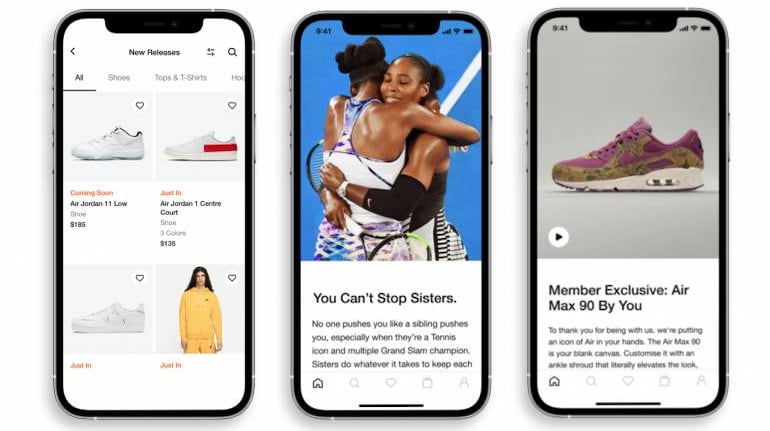Table of Contents
Have you ever heard of the term “Omnichannel Marketing” and wondered what it means? Or perhaps you’ve been trying to distinguish it from Multichannel Marketing and Integrated Marketing? Let’s dive into this marketing marvel.
Omnichannel Marketing is a marketing strategy that provides a seamless and unified customer experience regardless of where or how a customer chooses to interact with a brand. This could be in a physical store, an online store, through social media, or any other interaction point. The goal is to cater to the customer’s journey, providing a consistent and personalized experience across all channels.
According to Forbes, 90% of customers want consistent interactions across various platforms.
Key Elements of Omnichannel Marketing:
- Consistency: The customer experience is consistent regardless of the channel or device.
- Seamless: The transitions between channels are smooth and effortless for the customer.
- Customer-Centric: The strategy revolves around understanding the customer’s journey and catering to it.

Definition of Omnichannel
Omnichannel marketing is a holistic approach that provides a seamless and consistent customer experience across multiple marketing channels and touchpoints.
Unlike multichannel marketing, which focuses on establishing a presence across various channels, omnichannel marketing takes it a step further by integrating these channels to create a seamless experience for customers. This means that whether a customer interacts with a brand through a physical store, a website, a mobile app, or social media channels, they should receive the same level of personalized service and messaging.
Omnichannel approach recognizes that customers are not limited to a single channel; instead, they move between channels throughout their buying journey. With an omnichannel strategy, marketing teams can engage with customers at various touchpoints, collect insights at each step, and tailor marketing strategy to meet customer needs and preferences.
Omnichannel Marketing VS Multichannel Marketing
The terms “omnichannel” and “multichannel” are often used interchangeably in the marketing world, but understanding the difference between the two is crucial. The key difference between omnichannel and multichannel marketing lies in the level of integration and consistency in the customer experience.
Omnichannel marketing is an approach that centers on delivering a consistent, personalized experience for shoppers across all channels and devices. In this model, every platform or channel is interconnected to offer a unified customer experience. The focus is on the experience for customers and their engagement journey with the brand. The data from one channel can be used to automate the actions on the other, for example.
On the other hand, multichannel marketing involves promoting a product or service on multiple platforms. But there is a hidden problem – these platforms operate independently, with little to no integration. The emphasis is more on the channels themselves, rather than the customer’s journey.
Omnichannel strategy is customer-centered, while multichannel strategy focuses more on the channels.
Let’s break down the differences a bit more:
| Omnichannel Marketing | Multichannel Marketing | |
|---|---|---|
| Focus | Customer-centered | Channel-centered |
| Integration | High – all channels are interconnected | Low – channels operate independently |
| Personalization | High – tailored to individual customer journeys | Low – general approach for all customers |
In a nutshell, while both strategies can be effective, omnichannel marketing offers a more integrated, personalized approach that puts the customer’s journey at the core of the strategy. It’s not just about being present on all platforms, but weaving them together to provide a seamless, consistent experience.
Omnichannel VS Integrated Marketing
Unraveling the tangled web of marketing jargon, one may stumble upon the term like “integrated marketing”. Though it sounds similar to “omnichannel marketing”, their approaches to engaging customers are quite unique.
Omnichannel marketing, as the name suggests, is creating a seamless process in the buyer’s journey. It’s like a well-coordinated orchestra, where every instrument or in this case, every channel, works in harmony. The focus here is on blending channels like email, social media, brick-and-mortar stores, and more to provide a consistent and connected customer experience.
Let’s take as an example: you’re shopping online for a pair of shoes. You add a pair to your cart but decide to hold off on buying. Later, you receive an email reminding you of your pending purchase. You open your social media app, and there’s an ad for those shoes again. This is just a small fraction of what a good omnichannel marketing strategy can contain.
On the flip side, integrated marketing is focused on storytelling and consistent messaging across different platforms. It focuses on communicating a unified, compelling message that resonates with customers no matter the platform they interact with. It’s less about the seamless journey and more about the brand narrative.
Omnichannel marketing takes it a step further than integrated marketing by offering an integrated customer experience. This approach allows for more personalization and interaction with customers, as they can switch between channels mid-transaction without any hiccup. This kind of tailored, smooth experience is what sets omnichannel marketing apart.
- Omnichannel marketing: A seamless process in the buyer’s journey across various channels.
- Integrated marketing: Consistent storytelling across different platforms.
While both strategies aim for consistency, omnichannel marketing genuinely puts the customer at the center, focusing on providing an integrated, personalized, and seamless customer experience. In the perfect scenario these two forms of marketing should be used at the same time.

Why do you Need an Omnichannel Marketing Strategy?
In our hyper-connected world, an omnichannel marketing strategy is not just a nice-to-have; it’s a necessity. This strategy helps create a positive, seamless customer experience across multiple touchpoints and significantly boosts brand loyalty. It lets your brand be present, consistent, and personalized wherever your customer turns – like a warm, familiar face in a crowd.
Customers today aren’t just looking for products or services; they’re seeking experiences. They prioritize brands that offer personalized interactions and outreach. A well-tailored email here, a personalized recommendation there, a timely assistance somewhere else – creating that ‘made just for you’ feeling.
Did you know that omnichannel marketing campaigns can rocket your engagement rate by 250% compared to single-channel campaigns?
And here’s the best part. A omnichannel experience influences customer action beyond just making a purchase. They’re more likely to advocate for your brand, recommend it to others, and come back for more. Brands must be personal, present, and proactive to forge meaningful connections with customers.
Businesses that use robust omnichannel engagement strategies manage to retain 89% of their customer base on average. That’s quite a retention rate!
Omnichannel Marketing Strategy Basics
Everything we’ve talked about is great in theory, but where should we start? Let’s look at different omnichannel strategies you might encounter:
- Cross-channel shopping experiences: A seamless transition for customers shopping across multiple channels. You may start your shopping journey on one platform, like a mobile app, and end on another, like a physical store.
- Personalized and targeted engagements: The first step is to collect data from various channels to create ads tailored to your customers’ preferences and shopping behavior.
- Integration of platforms with consumer needs and lifestyles: This strategy involves integrating multiple platforms to cater to the needs and lifestyles of consumers. Enhancements like social media shopping and mobile e-wallets make shopping convenient and enjoyable.
So, why does all this matter? Well…
Customers are looking for flexibility, personalization, and convenience. Omnichannel marketing strategies prioritize these needs by integrating various platforms and creating a seamless and consistent customer experience. Selling is more than a product; it’s creating a memorable shopping experience.
Omnichannel Marketing Tools
Entering the world of omnichannel marketing can feel a little overwhelming at first, especially when trying to find the best tools to execute your strategy.
There are numerous tools for integrating various marketing channels. The most challenging step is rather to determine which channels to connect for the specific customer persona.
This is a list of key omnichannel marketing tools for a unified brand experience and centralized information source across all customer interactions.
- Digital Asset Management (DAM) Software: It allows you to manage, organize, and distribute your digital assets from a central location (like branding elements and key narratives, for example). This ensures consistent messaging and branding across all channels. Plus, it gives your team easy access to everything they need to deliver perfect customer experience.
- Product Information Management (PIM) Software: It provides a single source of truth for all product information, ensuring consistency across all channels. This way, your customers know exactly what they’re getting, no matter how and where they engage with your brand.
- Customer Relationship Management (CRM) Systems: CRM Systems are the glue that holds all your customer data together. They store information about your customers’ behavior and preferences across different channels, allowing you to create personalized, targeted marketing campaigns.
These tools are integral to creating a successful omnichannel marketing strategy. They help create a central source of truth, streamline communication and ensure your brand delivers a consistent experience to your customers, no matter where or how they choose to engage.
Examples of Omnichannel Marketing
If you’re still not quite sure what omnichannel marketing is, don’t worry. Below are three examples of omnichannel marketing used by real companies with the list of strategies they use.
Target
Target is a retail giant and a shining example of omnichannel marketing done right. Target leverages its app and in-store strategies to provide a seamless shopping experience for its customers.
App Features: Target’s app goes beyond the standard e-commerce fare. It allows customers to make purchases, check product availability, and even locate items in the brick-and-mortar store. But it doesn’t stop there. It also offers options for drive-up and pickup, making shopping even more convenient.

Personalized Marketing Messages: Target doesn’t believe in a one-size-fits-all approach. They personalize their marketing messages by segmenting customers based on profile data, campaign engagement, and shopping behavior. This ensures that the right message reaches the right customer at the right time, leading to higher sales.
Omnichannel marketing focuses on reaching customers where they are and improving their shopping experience. This approach is seen in Target’s app features and tailored marketing tactics.
Nike
When it comes to exemplary omnichannel marketing, Nike stands at the forefront. Nike’s approach to this strategy has been highly effective, creating a seamless customer experience across all channels.
Nike’s success in omnichannel marketing hinges on their innovative Nike App. This app has revolutionized the shopping experience for Nike’s customer base, providing an array of features that activate customer engagement.

- Browsing and Reserving Items: The Nike App allows customers to browse through products and reserve their favorites for in-store pick-up. This integration of online and offline shopping journey creates a hassle-free shopping experience.
- QR Code Scanning: With QR code scanning, customers can simply scan the tag on a product in-store, and instantly view it in the app for more product details, reviews, or even to order online. A perfect blend of physical and digital shopping.
- Personalized Recommendations: The Nike App utilizes AI to offer customers personalized product recommendations based on their preferences and shopping history, making their shopping experience hyper-personalized.
- Exclusive Access to New Products: Nike App users receive exclusive early access to new product releases. This adds a sense of exclusivity and encourages more interaction with the app.
Nike’s omnichannel marketing strategy has improved customer experience, making shopping more personalized and efficient and, should we say, “stylish”?
Net-a-Porter
Net-a-Porter, the high-fashion retailer, created a seamless nexus between the physical and digital world for their customers. Their approach is a prime example of how a well-planned and cohesive strategy can drive sales growth.
Net-a-Porter focuses primarily on three distinct channels:
- Mobile App: Recognizing the shift towards mobile shopping, they’ve created a luxury shopping experience that’s not just mobile-friendly, but mobile-first. The app is user-friendly, visually appealing, and enriches the shopping experience by providing personalized recommendations and options to pre-order items.
- Email Marketing: Net-a-Porter uses email to engage their customers with curated content, fashion news, and hyper-personalized product suggestions.
- Ad Retargeting: They use retargeting to remind customers of items they’ve viewed or added to their cart, encouraging them to complete the purchase.

The result of this omnichannel marketing approach? A significant boost in growth and sales. Net-a-Porter has successfully built a cohesive customer journey that moves between channels, enhancing the overall user experience and, in turn, driving business results.
When it comes to omnichannel marketing, Net-a-Porter is a prime example of how to do it right. They’ve created a seamless and engaging experience that drives customer loyalty and boosts sales by focusing on the right channels.
Marketers must understand that the future is omnichannel. The key to increasing customer retention and revenue lies in the ability to create a seamless, personalized customer journey.




